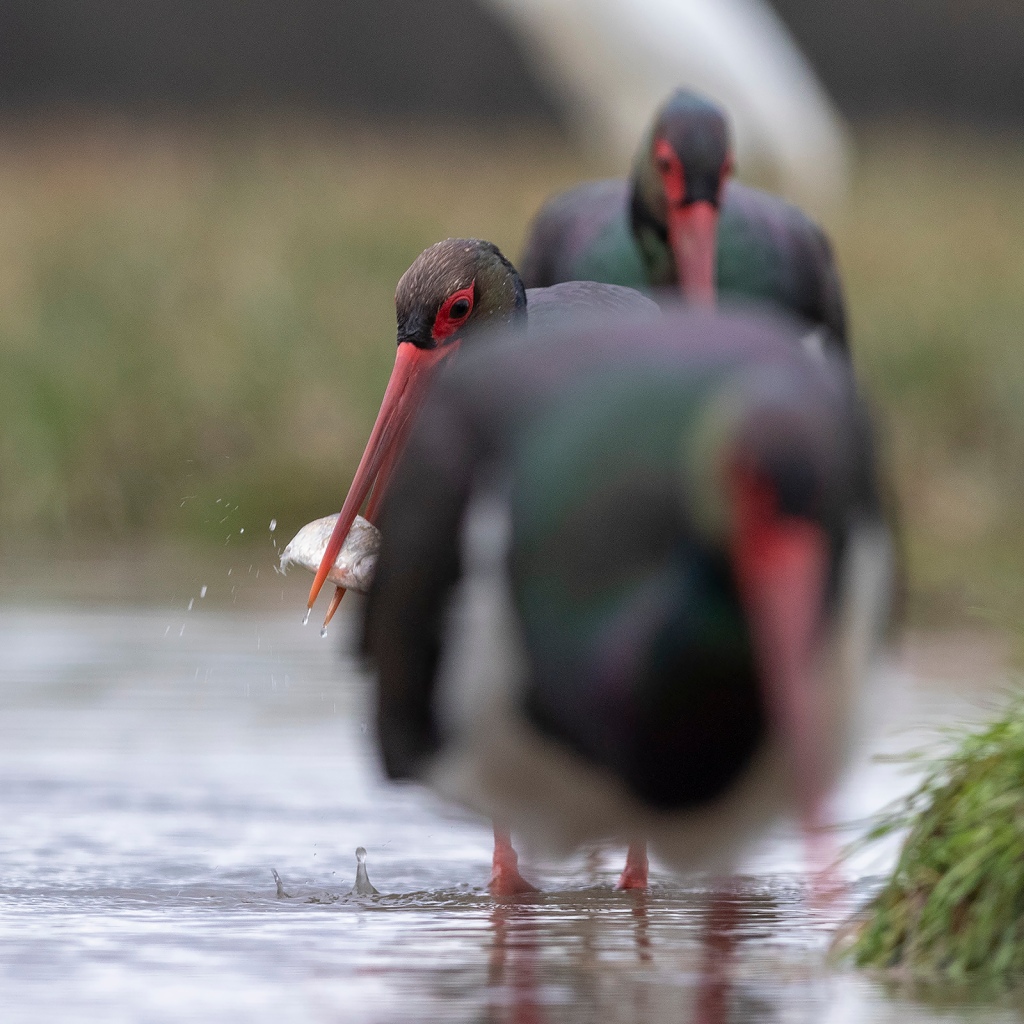Starting with global difficulties the near past was not really bright not in Hungary neither in other parts of the world. However, birds were here and inside country travelling was not banned in Hungary so many Hungarian photographers were able to visit our hides from March to early May trying their luck and reflexes with Black Storks and shorebirds behind the glass.

The well-known Egret and Stork hide gave great opportunities from the end of March to photograph Black Storks – a really shy and seldom photographed species surrounded with the more common Great White Egrets, Grey Herons and later the season Eurasian Spoonbills.


Being behind the glass this close to these magnificent birds and just watching their intimate life as they display to each-other or sometimes fight each-other makes not just photography but simply the presence in the hide something truly unique and special. This spring we had several pairs of Black Storks attending to the hide and giving the opportunity to capture some special moments for the photographers in the hide.

The Hortobágy has some bird specialities which are even hard to observe and still not taking photography into account. We have a very special hide for Great Bustards which is placed at a traditional display ground of these giant birds. As the site is on the vast puszta it takes time until the birds get close enough to the hide, but when they appear it is worth the time spent with waiting.
Nothing describes better the opportunity then this short video footage by Attila SZILÁGYI, where a beautiful male Great Bustard is starting his display – of course as it is seen from the hide.
Our mobile shorebird hide was also active from early spring and we were trying to do our best tracking down shorebirds and moving the hide to the best available spots possible. It was worth visiting the hide. Northern Lapwings, Spotted Redshanks, Ruffs, Dunlins, Pied Avocets, Black-winged Stilts and many other beauties were attending in front of the hide. No wonder this group is one of the best amongst the class of birds – just check the delicate pattern of their plumage.




Shorebirds are specially adapted to wetlands and their different parts. Some are with shorter legs and some with longer. The Avocets and Stilts are exceptionally long legged ones – the Black-winged Stilt has the longest leg compared to its body amongst all the birds. However, they are only black-and-white feathered, they look elegant and magnificent with their legs giving colours to their appearance: unique blue of the Avocets and shining red of Stilts.


The variety of shorebirds is amazing making them a very diverse group of birds, many of them have a fine, pearl-like pattern on their back.




